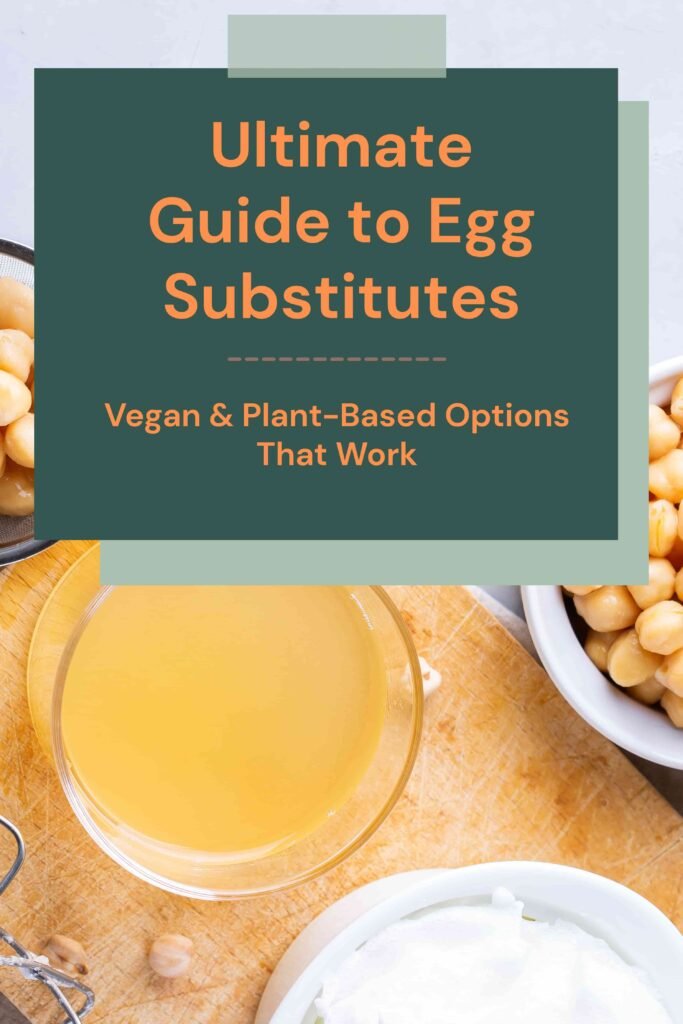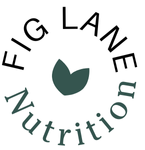Whether you’re choosing to use a plant-based egg substitute as part of a vegan diet or trying to eat a more plant-forward diet, knowing how and what to use for egg substitutes is important. As a registered dietitian with a plant-forward focus, I often get a lot of questions about this very topic. Egg substitutes can work great, but you need to understand what role the egg plays in the dish you’re making in order to choose the right swap.

In this guide, I’ll take you through my go-to egg substitutes for both breakfast alternatives and which ones to use in baked goods to get the best flavor, texture, and nutrition.
What do Eggs Bring to the Table?
Below I will discuss eggs, including their nutrition, why they’re used, and what properties do they bring to baking and cooking so we can grasp why choosing the right egg substitutes is important.
Nutrition
When it comes to eggs substitutes, baking is a whole different ball game as you are focused more on the properties eggs bring as opposed to the nutrients. However, many of us use eggs for there convenient source of protein at breakfast. One egg has about 6 gram of protein and is also a good source of choline, riboflavin, selenium, pantothenic acid, and Vitamin B12 [1].
Leavening
Leavening is the substance used to help a dough or batter rise in cooking. It gives it a lighter and fluffier texture. With eggs, this is mainly done through whipping the egg whites. The protein structure of egg whites are foam trapping air that can then be incorporated into a product. Egg whites are also sometimes used by bartenders to get a foam on top of a drink as well.
Binding
Binding or setting occurs with the protein coagulation of eggs. This is where the egg is being cooked, helping to hold the product together. This is important in things like cakes, cookies, meatballs (or meatless balls) and more so they don’t crumble and fall apart.
Emulsification
Egg yolks provide an emulsification property primarily for its lecithin content. Lecithin helps to combine a watery based ingredients with an fat or oil. This can be used to make creamy dressings, mayonnaise and sauce but, also in cakes, custards and more.
Texture
Egg yolks provide a richness to a dish from their fat content. You can typically feel and taste the difference is=n this when comparing an angel food cake, which uses egg whites and no fat, to a regular cake with whole eggs (some with additional yolks) and another fat source.
Color
Often eggs washes are used to give a glossy finish to pastries and breads. This can be made of a mix of whole eggs and a milk or cream, egg yolks, or their whites which is also used to bind another topping to bake on a product. Common examples would be sesame seeds or everything bagel seasonings.
Products made with Eggs and Their Substitutes
Scrambled Egg Plant-Based Substitute
Most of the time when I make scrambled egg substitutes at home, I reach for a block of tofu. When making tofu scramble, I use extra or super firm tofu for its higher protein content, plus a slurry of corn starch and dairy free milk for a creamy texture, and yellow curry powder for color and flavor. You can find the full recipe bellow.
Now when comparing scrambled egg to tofu, you still get protein but it lacks high amounts of choline, riboflavin, selenium, pantothenic acid, and Vitamin B12.
Cookies, meatballs and more
This section is to talk about the substitute for binders. This is binders for cakes, cookies, and more to keep them from crumbling apart after baking. Commonly known egg substitutes in baking is ground flax seeds, chia seeds, apple sauce, mashed banana, or an egg replacer product. Mashed fruit tends to work slightly better in quick breads, muffins, and cakes. Whereas flax and chia seeds work better for cookies and meat or meat alternatives in meatloaf of meatballs. Egg replacers can be used for either.
Whipped Egg White Substitutes
If replacing whipped egg whites in meringue, cocktails, cakes, and more, use aquafaba or a mixture of potato protein and water. Aquafaba is the thick liquid that comes from cooking beans and easiest to obtain from straining a can of chickpeas. If the item is being baked, a mix of potato protein and water can also be used to get the airy foam.
For aquafaba, use 2 tablespoons for every one egg white. So if a recipe calls for two egg whites, use 4 tablespoons aquafaba. If using potato protein, combine a mixture of 2 teaspoons potato protein with 2 tablespoons of cold water before whisking as you would egg whites.
Mayonnaise, Dressings, and Sauces
When making these creamy sauces, you are looking to use something that will help with emulsification. As mentioned lecithin from egg yolks is normally used. For a plant-based alternative, foods contain soy lecithin like soy milk or silken tofu can be used.
Use 1/2 cup soy milk or 1/4 cup (60 grams) of silken tofu. Add to a blender or food processor and slowly stream in your fat sources while blending as you would with eggs. If you choose to use silken tofu blend till smooth before adding other ingredients.
Egg wash
When talking about that light brushing on a baked product to give it that glossy finish there are a few options. A light brushing of a plant-based milk mixed with maple syrup can be used. If you are trying to get something to stick to the surface like seasonings or seeds, a dip in aquafaba tends to work better.
Take Away
Egg substitutes aren’t just for vegans, they are also for people trying to reduce but not eliminate animal products in their diet or people who are trying to save a few bucks and not buy eggs. However, if you going to use egg substitutes, it is important to know what to use and when to use it because, eggs themselves bring a multitude of properties and nutrients to the baking and culinary world.
